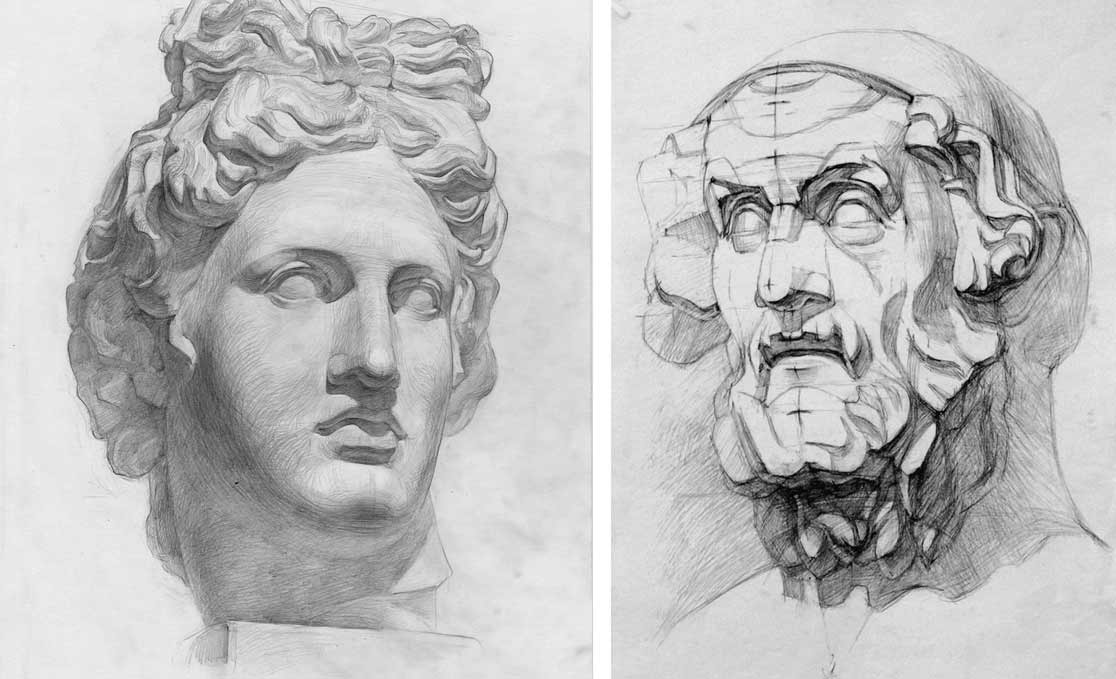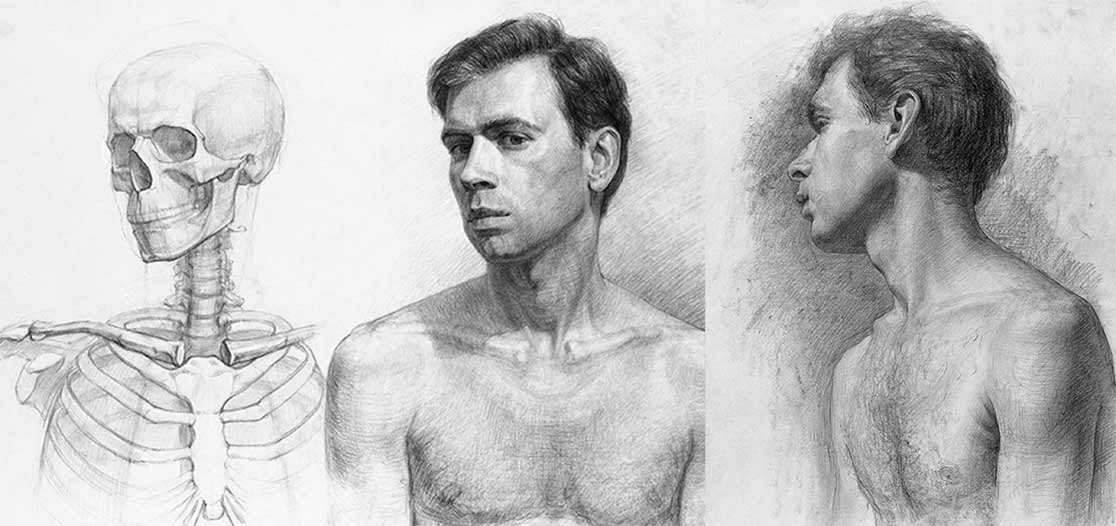Why you need constructive drawing to draw portraits
Enroll in the Life Drawing Academy now!
Why you need constructive drawing to draw portraits
At Life Drawing Academy, we received the following questions from John:
"I am not a member yet but is it ok if I ask you a quick question? Although it is very nice to see someone practicing faces and heads that are like Greek Statues, would it not be a good idea for learning portraits to do an actual portrait. Isn't it just as important to learn to see the exact distances and lengths on the face of the person in front of you? I feel no matter how much knowledge you have about what makes up a head, that is still an average head not a portrait. Generalized faces can be helpful but real faces are more complicated and subtle just needing lots of observation and familiarization. Could you please advise me if this comment seems ignorant or lacking. I would like to learn."
Feedback from Vladimir London, a Life Drawing Academy tutor
Dear John, thank you for your question. From what you say, I guess you are a complete beginner who never had proper art education; please correct me if I'm wrong. Drawing classical canons of proportions, which derive from ancient Greek and Roman styles because those civilisations were the first to reach realistic art, is not about learning Greek and Roman art.

Likewise learning how to draw a cube from life is not about drawing cubes. The same as rendering tonal values of a sphere is not about drawing a ball. Such exercises prepare an artist for constructive drawing, which is based on fundamental principles, such as perspective, proportions, rules of chiaroscuro, etc. After getting the needed knowledge, an artist might never draw a Greek profile, cube or sphere ever again, but this experience will give such an artist the needed skills to draw whatever one sees or imagines. It doesn't matter that some models do not have the same proportions as Greek busts. A classical canon is the guidance of what to measure, not what to apply in every drawing.
What you have in mind is called drawing from observation. This is what many colleges teach art students these days; this is why so many art college graduates cannot draw. What we teach is called "constructive drawing". When you know it, you do not need "lots of observation", as you put it, because constructive approach gives the skills observational artists don't have.

If you need an example that explains the difference between constructive and observational drawing, here it is. Let's say you draw a model from observation. To make an accurate and recognisable portrait, you would need to take hundreds of measurements and every measurement could be miscalculated, which doesn't help. When a model moves or changes a pose, all measurements go wrong and you would need to start again. The same happens when you change your point of view. If you decide to draw the same model from memory, you will fail because it is next to impossible to remember hundreds of individual measurements, not to mention that they will change for every new pose. That is why so many artists can't draw without reference photos, which brings another question - is it drawing or copying; and does copying a picture is original art? But we will leave these questions to another discussion.
However, when a skilled artist with a classical art education draws from life, one depicts what he or she knows about construction, proportions and anatomy of a human head. It doesn't matter if a model changes a pose slightly. The round muscle of an eye, for example, would not become square. The same with all other proportions and planes, they will remain in place. When such an artist decides to draw this model from memory, it is much easier, because an artist does not need to keep in mind all the measurements for every point of view; only remember those proportions that differ from a canon. For example, the model's ear has a slightly wider intertragic notch, but otherwise follows the canon, the only thing an artist needs to remember to draw it from memory from any point of view is that it has a bigger notch; that's it. How much easier and elegant such drawing from memory is because it is based on constructive drawing principles, not observation.
I hope this explains the importance of learning constructive drawing, including canons of proportions. If you want to become a skilful fine artist who can draw from life, memory and imagination, consider taking the Life Drawing Academy Correspondence Course.
To learn good drawing techniques, enroll in the Life Drawing Academy course:
Online Course
A self-study, self-paced course for you to learn fundamental methods of classical drawing and improve life drawing skills by watching video lessons and doing assignments
- Unlimited access to 52 life drawing video lessons
- Lifetime membership without deadlines
- Unlimited support from the Academy tutors
- Constructive critique of your artworks
- Member access to the Academy's Art community
- Place in the Academy's Students Gallery
- Exclusive members-only newsletter and bonuses
- Life Drawing Academy Diploma of Excellence in your name
One-time payment - Lifetime membership
$297 USD
Personal Tutoring Online + Online Course
The ultimate choice if you who would like to receive personal, one-to-one tutoring from the Academy teachers, which is custom-tailored to your skills and needs
- Everything in Online Course, plus:
- Dedicated team of art tutors
- Assessment of your current level of drawing skills
- Personalized curriculum tailored to your skills and goals
- Up to 100 drawing tasks with by-task assessment
- Unlimited one-to-one personal coaching with detailed per-task instructions and feedback
- Artwork critiques and results-oriented guidance
One-time payment - Lifetime membership
$997 USD




